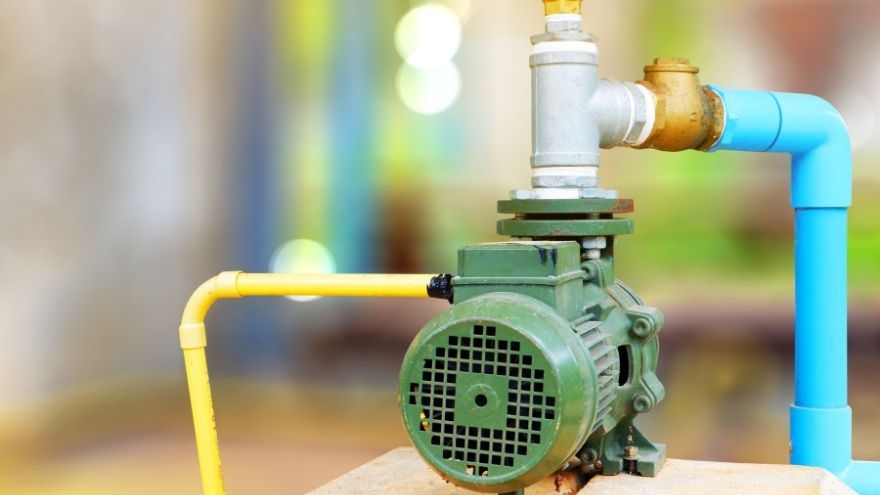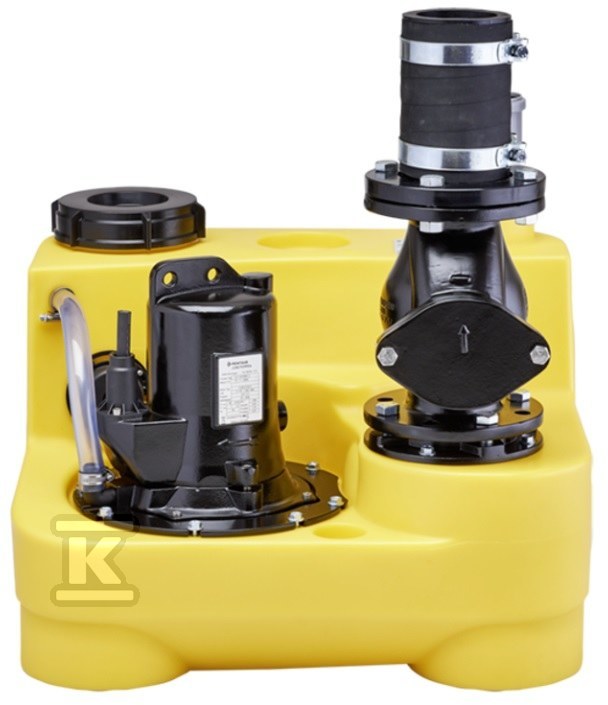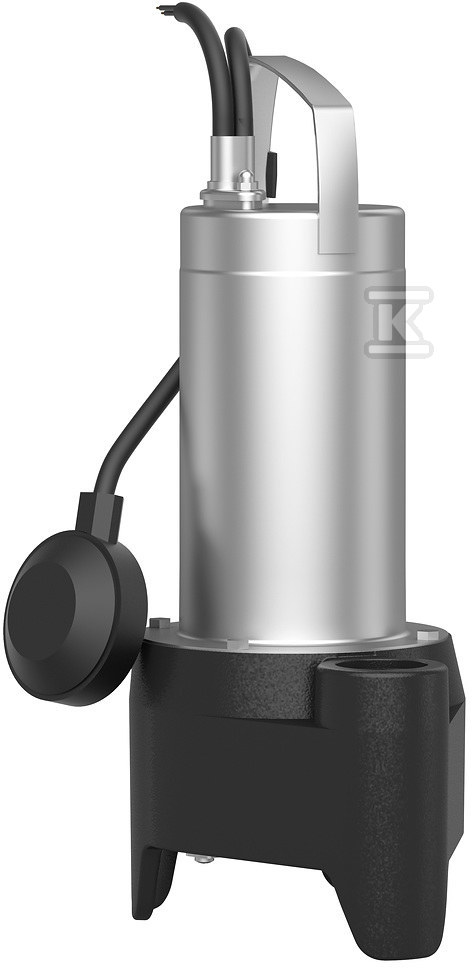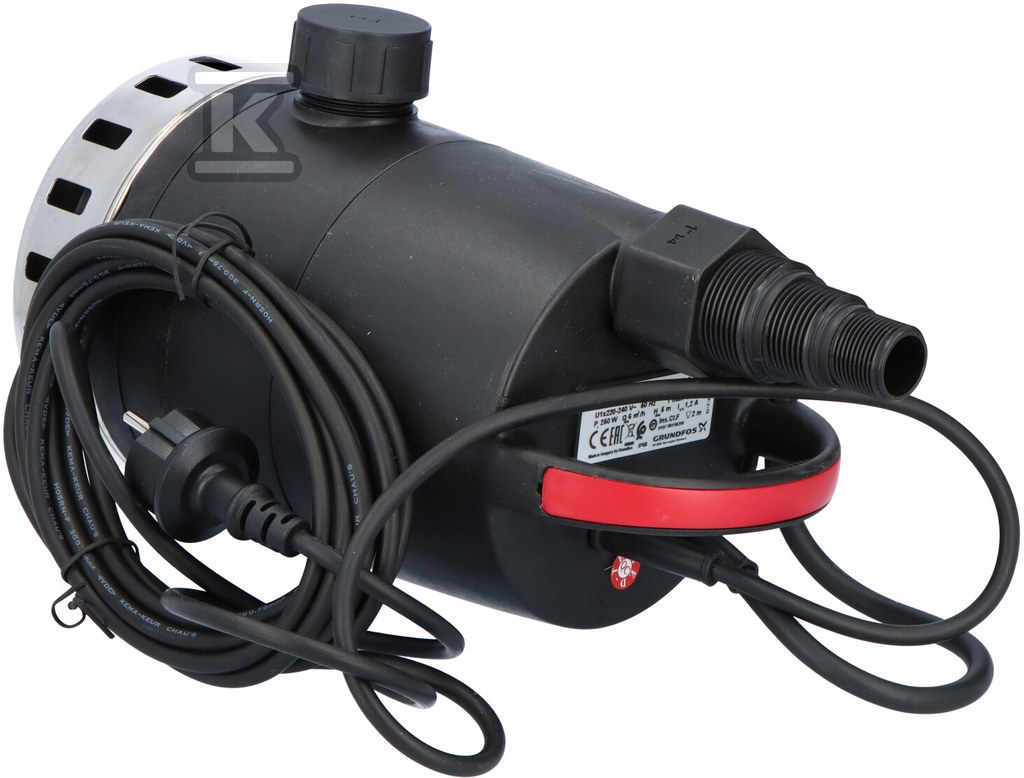Designing a sewage pumping station requires detailed analysis of many technical parameters so that sewage disposal is effective and reliable. How to design a sewage pumping station correctly? Find out how to avoid the most common mistakes when building or modernizing a sewage treatment plant?

Check out submersible sewage pumps at the Onninen wholesaler
What needs to be analyzed before designing a sewage pumping station?
A sewage pumping station is a key element of the sewage network, used to discharge sewage in places where the use of gravity sewage is impossible.
Sewage pumps and pumping stations are responsible for transporting domestic sewage from low areas to higher parts of the network, where it can be naturally discharged.
- When designing a sewage pumping station, several key parameters should be taken into account:
-
 Type of sewage – domestic, storm or industrial sewage require different solutions;
Type of sewage – domestic, storm or industrial sewage require different solutions; - Tank size – a tank that is too small will not be able to store sewage effectively, which may lead to it overflowing.
- Pump efficiency – select an appropriate pump for the characteristics of the domestic sewage and the required flow.
- Location and terrain conditions – areas with gravity sewerage and combined sewerage require different design solutions.
- Type of installation used – selection of appropriate storm drains and sewage network is crucial to ensure trouble-free drainage of rainwater and sewage disposal .
In this context, selecting the right sewage pump can significantly improve the efficiency of the entire system. It is important to use devices designed for a given type of contamination to avoid system failure. The documentation should also include the type of sewage system with which the pumping station will work (applies to gravity sewage, storm sewerage or combined sewage).
The most common mistakes in designing sewage pumping stations
Designing a sewage pumping station requires precision and the right tools.
Here are some of the most common errors that can affect the operation of your purification system:
- Mismatch between pump capacity and sewage flow – this may lead to tank overflow or excessive energy consumption;
-
 Lack of sufficient site and building analysis , which may lead to improper connection of devices to the existing sewage network;
Lack of sufficient site and building analysis , which may lead to improper connection of devices to the existing sewage network; - Failure to properly take into account rainwater – the lack of a separate drainage system may result in the entire system being overloaded by pressing water;
- Lack of detailed technical documentation specifying all the elements related to the project, including details regarding the treatment plant to which the sewage is delivered.
- Neglecting regular modernisation of the system – modern technologies, such as pumps and sewage pumping stations, require regular inspections and maintenance, both in terms of the technical efficiency of the devices and the proper connection of the pumps to the sewage network.
To avoid the above errors, it is worth using professional solutions, including a retention tank and systems for disposing of domestic sewage, which significantly increase the efficiency and safety of the installation.
Flood protection project for sewage pumping station
Flood protection is a process of preventing flooding of the installation, which is particularly important in the case of areas exposed to heavy rainfall. Thanks to the appropriate selection of devices, it is possible to effectively control the level of rainwater and ensure the effective drainage of domestic and rain sewage. In other words, flood protection systems provide protection for households, enabling the drainage of water from the building. Flood protection included in the sewage pumping station project consists of the use of a pump and receiver, which allow for the safe drainage of water and protection against flooding, thus making the treatment plant more efficient.
A well-designed anti-flood system should include:
- Capacity and type of pump used.
- The use of appropriate protective devices, such as non-return valves, designed to prevent the backflow of sewage.
- Taking into account legal provisions regarding the construction and installation of the system.
 It is extremely important that each pumping station is equipped with appropriate sewage pumps that will ensure efficient sewage treatment and its smooth flow to the receiver.
It is extremely important that each pumping station is equipped with appropriate sewage pumps that will ensure efficient sewage treatment and its smooth flow to the receiver.
The Onninen wholesale offer includes advanced solutions in this area, such as pumps and flood protection systems that ensure safe drainage of waste and protection of buildings against flooding.
Flood protection is crucial for the trouble-free operation of sewage pumping stations. By using appropriate pumps and sewage pumping stations and properly maintaining the system, you can avoid costly repairs and ensure safe disposal of domestic sewage.
When designing a sewage pumping station, it is worth using the offer of the Onninen wholesaler, where you can find high-quality equipment for sewage pumping stations and accessories for modernization and protection of the treatment system. Selecting the right elements, such as pumps, tank or anti-flood systems, guarantees the efficiency and safety of the entire installation.
Check out submersible sewage pumps at the Onninen wholesaler